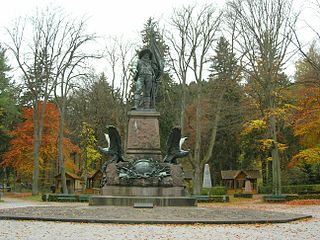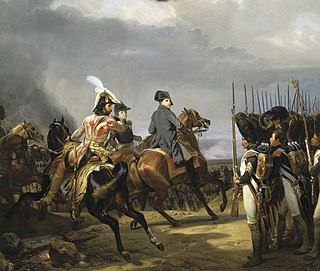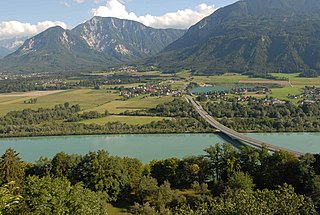
At the beginning of the War of the Fifth Coalition on 9 April 1809, the armies of the Austrian Empire invaded the Kingdom of Bavaria, an ally of the First French Empire, and the Kingdom of Italy, a French satellite. After Austria's defeat in the War of the Third Coalition the County of Tyrol and the Vorarlberg were ceded to Bavaria in the Fourth Peace of Pressburg on 26 December 1805. Angry at the imposition of Bavarian laws and conscription, the Tyrolese rebelled in support of Austria. During the first week, local irregular forces killed or captured the main Bavarian garrison and also forced a French force to capitulate.
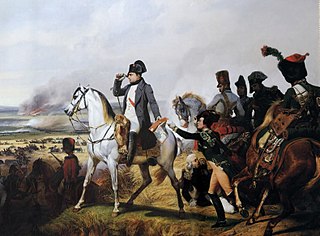
The War of the Fifth Coalition was fought in 1809 by a coalition of the Austrian Empire and the United Kingdom against Napoleon's French Empire and Bavaria. Major engagements between France and Austria, the main participants, unfolded over much of Central Europe from April to July, with very high casualty rates for both sides. Britain, already involved on the European continent in the ongoing Peninsular War, sent another expedition, the Walcheren Campaign, to the Netherlands in order to relieve the Austrians, although this effort had little impact on the outcome of the conflict. After much campaigning in Bavaria and across the Danube valley, the war ended favourably for the French after the bloody struggle at Wagram in early July.

The Austrian Empire was a Central European multinational great power from 1804 to 1867, created by proclamation out of the realms of the Habsburgs. During its existence, it was the third most populous empire after the Russian Empire and the United Kingdom in Europe. Along with Prussia, it was one of the two major powers of the German Confederation. Geographically, it was the third largest empire in Europe after the Russian Empire and the First French Empire. Proclaimed in response to the First French Empire, it partially overlapped with the Holy Roman Empire until the latter's dissolution in 1806.

The Kingdom of Bavaria was a German state that succeeded the former Electorate of Bavaria in 1805 and continued to exist until 1918. The Bavarian Elector Maximilian IV Joseph of the House of Wittelsbach became the first King of Bavaria in 1805 as Maximilian I Joseph. The crown would go on being held by the Wittelsbachs until the kingdom came to an end in 1918. Most of Bavaria's present-day borders were established after 1814 with the Treaty of Paris, in which Bavaria ceded Tyrol and Vorarlberg to the Austrian Empire while receiving Aschaffenburg and Würzburg. With the unification of Germany into the German Empire in 1871, the kingdom became a federal state of the new Empire and was second in size, power, and wealth only to the leading state, the Kingdom of Prussia. In 1918, Bavaria became a republic, and the kingdom was thus succeeded by the current Free State of Bavaria.
Contents
To assist the Tyrolean Rebellion, the Austrian high command sent a regular division into the Tyrol under the leadership of Feldmarschallleutnant Johann Gabriel Chasteler de Courcelles. The VII Corps, consisting of three Bavarian divisions under the overall command of Marshal François Joseph Lefebvre, invaded the Tyrol in mid-May. On 11 May, Lieutenant General Bernhard Erasmus von Deroy relieved the besieged Kufstein Fortress. Lieutenant General Karl Philipp von Wrede crushed Chasteler's division on 13 May at the Battle of Wörgl. Soon afterward, Lefebvre occupied Innsbruck. However, Deroy's division was attacked on 25 May and 29 May in the first two Battles of Bergisel and compelled to evacuate the Tyrol. By this time Chasteler's surviving regular troops were recalled to join the Army of Inner Austria, which was retreating toward Hungary. Only a handful of regulars were left to operate in the Tyrol.
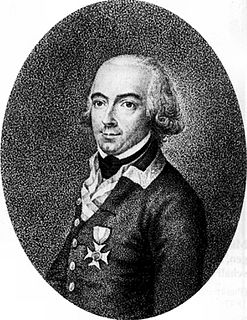
Johann Gabriel Josef Albert, Marquess of Chasteler and Courcelles was a Walloon, born near Mons, Belgium. He entered the military service of Habsburg Austria at an early age and trained as an engineer at the Ingenieurakademie in Vienna. Serving as Chief of Staff to Spleny in the Turkish War from 1788, he won the Ritterkreuz of the Order of Maria Theresa for outstanding bravery at the Battle of Focsani in action against the Ottoman Turks.

François Joseph Lefebvre, Duc de Dantzig, was a French military commander during the Revolutionary and Napoleonic Wars and one of the original eighteen Marshals of the Empire created by Napoleon.
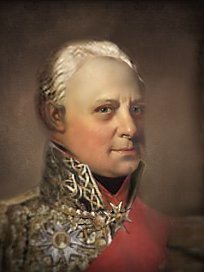
Bernhard Erasmus von Deroy from the Electorate of the Palatinate became a noted general officer in the army of Bavaria. His military career began shortly after the start of the Seven Years' War. During the French Revolutionary Wars he first served on the side of the Coalition against the French revolutionaries, then fought as an ally of the First French Empire during the Napoleonic Wars. Deroy and his colleague, Karl Philipp von Wrede, were dominant personalities in the Bavarian military during the era of Napoleon Bonaparte.
Soon after Emperor Napoleon I of France defeated the main Austrian army at the Battle of Wagram on 5 and 6 July, Austria sued for peace. However, the revolt in the Tyrol continued and the Bavarians invaded the region a second time in late July. After the insurgents beat Deroy at the Third Battle of Bergisel on 13 August, the Bavarians again withdrew. In the third invasion, the Bavarian 1st Division under General-Major Rechberg inflicted a bloody defeat on the irregulars on 17 October. Wrede won the Fourth Battle of Bergisel on 1 November and the revolt finally died down. One of the leaders of the rebellion, Andreas Hofer was betrayed to the French and executed in February 1810.

The Battle of Wagram was a military engagement of the Napoleonic Wars that ended in a costly but decisive victory for Emperor Napoleon I's French and allied army against the Austrian army under the command of Archduke Charles of Austria-Teschen. The battle led to the breakup of the Fifth Coalition, the Austrian and British-led alliance against France.
Brigadier general or Brigade general is a senior rank in the armed forces. It is the lowest ranking general officer in some countries, usually sitting between the ranks of colonel and major general. When appointed to a field command, a brigadier general is typically in command of a brigade consisting of around 4,000 troops. In some countries a brigadier general is informally designated as a one-star general (OF-6).

Andreas Hofer was a Tyrolean innkeeper and drover, who in 1809 became the leader of the Tyrolean Rebellion against the revolutionary Napoleonic invasion during the War of the Fifth Coalition. He was subsequently captured and executed.







